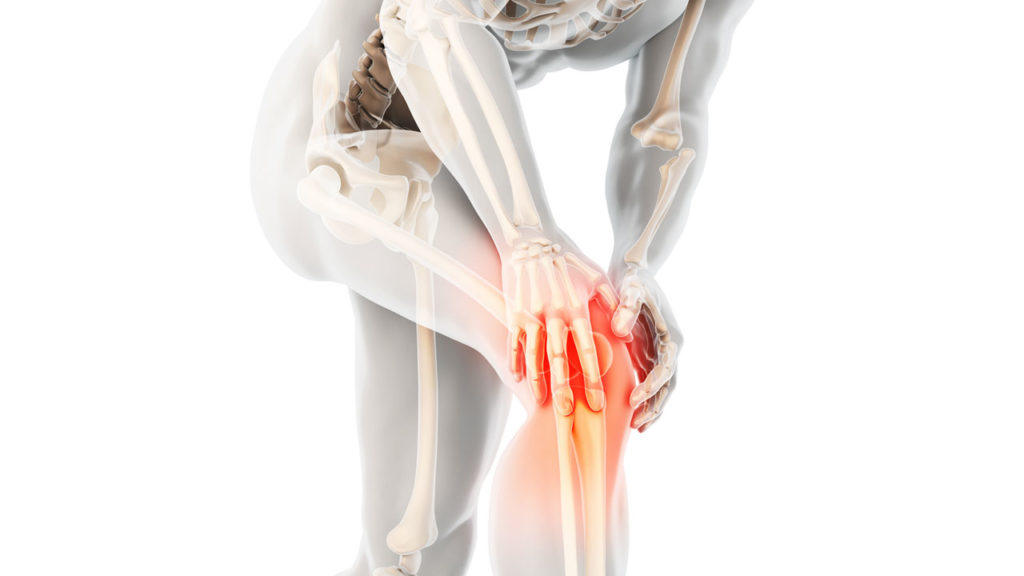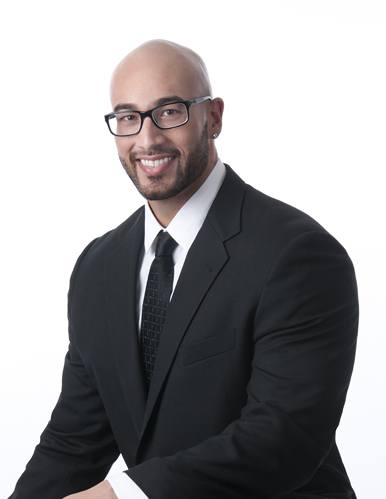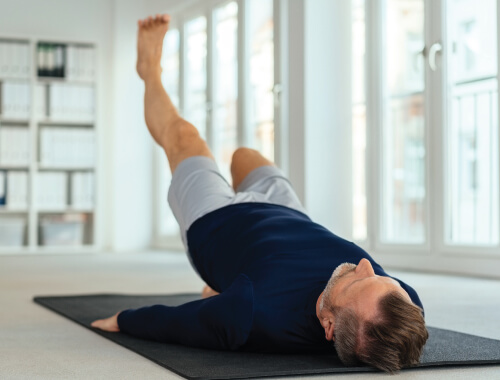
When you know in your bones that your body is a sacred gift, you move in the world with effortless grace. Gratitude and humility rise up spontaneously.
Debbie Ford
Osteoporosis is commonly perceived as a condition experienced exclusively by elderly individuals. In reality, our bones begin to change much earlier than most people realize, which is why it’s never too early to start thinking about what we can do to preserve bone strength. In fact, like health in general, caring for our bones should be a priority at every age. Whether you’ve already been diagnosed with or face an increased risk for osteoporosis or you’re taking the steps to safeguard your health against disease in the future, here’s everything you need to know about bone health and osteoporosis.
The literal meaning of osteoporosis is “porous bone.” All bone is somewhat porous, and when viewed under a microscope, healthy bone has a honeycomb-like appearance. In individuals with osteoporosis, however, the holes and spaces within this honeycomb structure are much larger.
Like other types of living tissue, bone tissue is constantly broken down and regenerated. This process slows down over time, and when new bone can’t be created as quickly as old bone is lost, it results in osteoporosis. Bone density and mass are reduced, leaving bones weaker and more vulnerable to fractures.
In fact, osteoporosis significantly increases the risk of fracture — so much so that simply mild physical activity (such as bending over) could result in fracture in individuals whose bones have become especially brittle. The most common sites for fractures related to osteoporosis are the hip, wrist, and spine.
The following factors can increase your risk of osteoporosis:
Unfortunately, osteoporosis is a common condition. More than 50 million Americans either have the condition or are at an increased risk for it due to low bone mass. [1] It’s most prevalent in individuals over 50, at which age 1 in 3 women and 1 in 5 men experience an osteoporosis-related fracture. [2] Bone density typically peaks during the late 20s and begins to weaken by the mid-30s. Thus, age is one of the non-modifiable risk factors of osteoporosis.
Another non-modifiable risk factor is sex. Women are more likely to develop osteoporosis than men, especially after menopause. Individuals with a family history of the condition and smaller body frames also tend to face a higher risk. Having a smaller body frame means there could be less bone mass to draw from with age. Being of white and Asian descent can also increase risk.
In addition, certain health conditions and medical procedures can contribute to bone loss. Autoimmune disorders, such as rheumatoid arthritis, lupus, and multiple sclerosis, as well as diabetes, premature menopause, low levels of testosterone and estrogen in men, and certain types of cancer, have been linked to osteoporosis, among other medical conditions. In terms of medical procedures, gastrointestinal bypass surgery and gastrectomy have been linked to bone loss. [3]
In addition to these non-modifiable risk factors, there are also risk factors within your control. We’ll discuss these in an upcoming section on osteoporosis prevention. First, let’s look at some of the symptoms of osteoporosis.
During the early stages of bone loss, individuals may not notice any identifiable symptoms. Once bones become weaker, however, issues such as loss of height, back pain, and stooped posture may occur. These can result from a fractured or collapsed vertebra. Of course, another telltale sign of osteoporosis is a bone that breaks far more easily than expected. If you’re over the age of 50 and have broken a bone, you may be a good candidate for a bone density test.
A bone density test is the only assessment that can be used to diagnose osteoporosis before breaking a bone. The DEXA scan is one cutting-edge test that can accurately measure bone density. This noninvasive body composition test sends multiple X-ray beams through the body at different energy levels to measure total body bone density, as well as bone density specifically in the spine. This helps physicians determine a patient’s risk of fracture. The findings from bone density test scans can also be used to form treatment plans, which brings us to our next section.
Osteoporosis is now largely treatable. Through a combined approach encompassing lifestyle changes and tailored medical treatment, fractures can often be avoided. The objectives of treatment include:
A patient’s treatment plan is usually based on their projected risk of a fracture within the next 10 years. Data such as findings from bone density tests are the common basis for informing treatment recommendations. For patients whose risk is low, treatment might focus on modifying risk factors for falls and bone loss.
Treatments can include:
If there’s an increased risk of fracture, bisphosphonates may be recommended to strengthen the bones and slow or prevent bone loss. These medications inhibit the development of osteoclasts, which break down and reabsorb minerals such as calcium from bone tissue. Monoclonal antibody medications can also be given via injection to specific patients to reduce the risk of fracture and increase bone density. In patients who can’t tolerate more common treatments, other bone-building medications may be explored.
When clinically indicated, hormone-related therapy may also be used to treat osteoporosis. Estrogen, in particular, can help post-menopausal women maintain healthy levels of bone density. Hormone replacement therapy (HRT) can also be used as primary prevention for osteoporosis and, in conjunction with a calcium-supplemented diet, has been shown to prevent hip, vertebral, and other fractures, even in low-risk patients. [4]
In addition to the above treatments, the following lifestyle modifications used to prevent the condition may also be used in combination to optimize the quality of life in patients who have already developed osteoporosis.
Your likelihood for developing osteoporosis depends, to some degree, on the amount of bone mass you attained during youth. Peak bone mass is partly inherited and can vary by ethnic group. The higher your peak bone mass, the more bone you have stored, and thus, the less likely you are to develop osteoporosis.
With that being said, there are ways to promote bone health at every stage of life and regardless of your individual risk. We’ll explore some of the most effective ways to strengthen bone tissue below.
Most adult men and women need 1,000 milligrams of calcium per day. When women reach the age of 50 and men turn 70 that amount increases to 1,200 milligrams. [5] The body constantly removes small amounts of calcium from the bones and replaces it with new calcium, which is why a calcium-rich diet is important for maintaining bone health at every age.
Calcium-rich foods for bone health include:
If you find it difficult to take in enough calcium through food alone, you could be a good candidate for calcium supplements. Be sure to discuss any new supplements with the specialist overseeing your wellness and nutrition treatment plan, however, as it’s also important not to exceed a certain amount of calcium on a daily basis.
Vitamin D helps the body absorb calcium, and these nutrients, therefore, play an important collaborative role in promoting bone health. The body can take in vitamin D when direct skin is exposed to UV rays, or through supplements. Vitamin D is also found in very few foods, but even the food it is found in contains a very small amount of the nutrient. Vitamin D supplementation is therefore widely recommended for patients — especially those at risk of developing osteoporosis. In elderly individuals, the risk of falls is reduced by 20% with vitamin D supplementation, and the risk of hip and vertebral body fractures is also reduced.
Fracture risk has been shown to be reduced in women who take HRT, regardless of whether or not they have established osteoporosis. In fact, women who used HRT over a 10- to 20-year timeframe experienced a risk fracture reduction ranging from 40% to 50%. Estrogen is instrumental in bone development, through the constant ebb and flow of formation, remodeling, and resorption. [6] Thus, when clinically indicated, HRT is a practical treatment option for promoting bone health and preventing osteoporosis.
Finally, some important lifestyle factors which can support bone health include maintaining a healthy weight and exercising regularly. While being underweight can increase the chance of bone loss, and subsequently, fractures, being overweight can also increase the risk of fractures. Achieving and maintaining an appropriate weight can therefore promote bone health and help to optimize wellness in general.
Regular exercise can also contribute to bone strength. No matter how or when you start, exercise can benefit your bones and your overall health. With that said, the younger you can begin, the better it will be for your bones. A combination of weight-bearing exercises and balance training can help to minimize the risk of falls and build strength in the body.
Whether you have a family history of osteoporosis or you’re simply seeking ways to take control of your health for long-term, optimized wellness, bone strength should be a priority at all stages of life. Osteoporosis is common yet largely preventable, and even when it does develop, there are both lifestyle modifications and medical treatments available to minimize the condition’s impact on daily life.
If you’re looking for ways to feel stronger and healthier now while pursuing practical disease prevention strategies, Cenegenics can help. Our physicians specialize in wellness optimization programs tailored to each patient’s unique needs. Through our strategic lifestyle, nutrition, and exercise recommendations, along with supplementation and HRT when clinically indicated, we give individuals the resources they need to enhance their health and feel their best at every age. To learn more about how Cenegenics can help you, contact your nearest location for a consultation.
Our world-class physicians create a personalized plan to help you feel 10+ years younger. You’ll be more energetic, lose weight, sleep better, have more libido, and think more clearly. Click below to schedule a free consultation with one of our physicians. It’s quick + easy.
Key Resources
This guide was produced with contributions from the following key resources:
The Cenegenics Education and Research Foundation
The Textbook of Age Management Medicine Volume 1: Mastering Healthy Aging Nutrition, Exercise and Hormone Replacement Therapy
The Cenegenics Education and Research Foundation
The Textbook of Age Management Medicine Volume 2: Mastering Healthy Aging Nutrition, Exercise and Hormone Replacement Therapy
Textbook Authors:
Jeffrey Park Leake, M.D., CPT
Dr. Jeffrey Park Leake is a Partner and Director of Education at Cenegenics Elite Health specializing in age management and wellness. Having trained hundreds of physicians worldwide, Dr. Leake is also the Director of Education for the Clinical Strategies for Healthy Aging course at AMM Educational Foundation.
Todd David Greenberg, M.D., CSCS
Dr. Todd Greenberg is a practicing physician with a broad range of expertise, including wellness, exercise, sports injuries, and MRI of sports injuries. He is a Radiology Clinical Associate Professor at the University of Washington.
Additional Resources
HRT for Women: Dispelling the Myths & Understanding the Benefits
DEXA Scan: How Cenegenics Accurately Measures Body Composition
Traditional Low-T Centers May Be Causing You To Miss Out On Weight Loss
Youth is a Feeling – Not a Number
Exercising Is Just The First Step In Weight Loss. Cenegenics Can Help You Conquer Your Goals
Understanding Hormone Replacement Therapy & Low Testosterone
How Marine Fish Oil Supplements Support Mental & Overall Health
Are You Experiencing Low Vitamin D?
References
[1] National Osteoporosis Foundation
[2] International Osteoporosis Foundation
[3] National Osteoporosis Foundation
[4] Leake, Jeffrey Park, M.D., CPT, and Greenberg, Todd David, M.D., CSCS. Textbook of Age Management Medicine: Volume 2. Leake-Greenberg Ventures, LLC, 2015. p. 75.
[5] Mayo Clinic
[6] Leake, Jeffrey Park, M.D., CPT, and Greenberg, Todd David, M.D., CSCS; p. 128-129.
 Contributor: Rudy Inaba Vice President of Health Performance
Contributor: Rudy Inaba Vice President of Health Performance
Rudy Inaba is Cenegenics’ Vice President of Health Performance. He is a recognized fitness and sports nutrition consultant with nearly 15 years of experience in clinical exercise physiology and lifestyle management. After pursuing his Master of Science in Clinical Exercise Physiology at the University of Nevada Las Vegas, Rudy joined Cenegenics where he leads 19 clinical locations nationwide in their advancements in kinesiology, nutritional biochemistry, and their analyses of industry research & market trending.


